Back in the saddle for 2022: How Ferrari stole a march on F1 rivals
Winless for almost three years prior to Bahrain 2022, and without a drivers’ title since 2007, Maranello is once again a menacing presence. Adam Cooper reports from Melbourne on Ferrari's return and why it’s good news for Formula 1
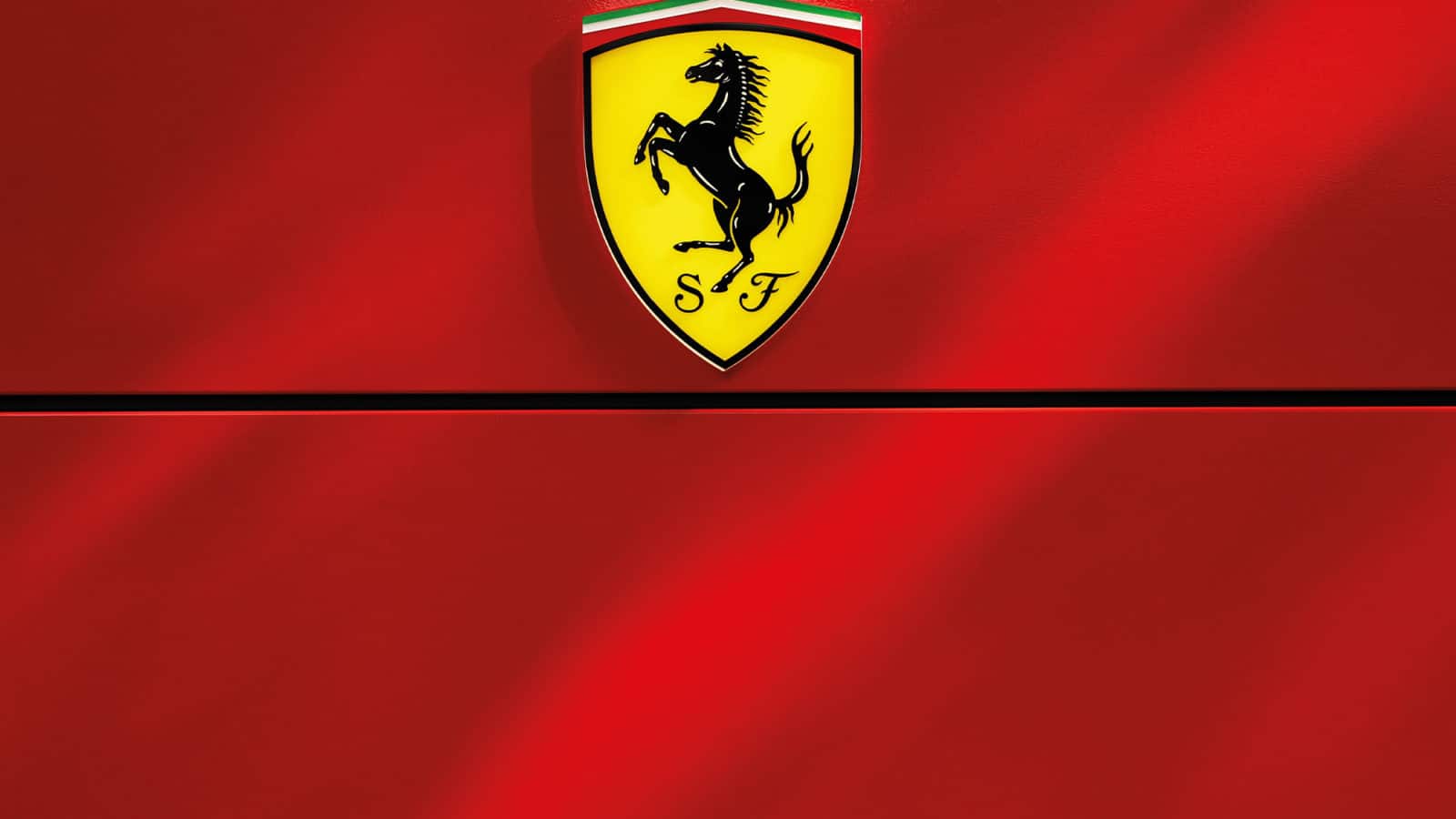
Getty Images
Charles Leclerc’s victory for Ferrari in the opening race of the 2022 season in Bahrain was welcomed by the tifosi hordes, who have waited years to see a proper title challenge launched from Maranello. The emotion as Leclerc hugged team boss Mattia Binotto was clear to see.
It was also welcomed by F1 bosses Stefano Domenicali and Ross Brawn. The fantastic wheel-to-wheel battles in the early races between Leclerc and Max Verstappen were the most visible sign that the 2022 aero package has achieved its job of making it easier to follow, thus opening up overtaking opportunities.
And as fabulous as last year’s titanic struggle between Mercedes and Red Bull Racing was, the sport needs Ferrari to join the battle at the front. A new generation of fans has been attracted over the past few years, many via the Drive to Survive series, and there’s an obvious push to give them the best possible show.
After the team’s 1-2 in the opening GP in Bahrain, Domenicali didn’t mince his words: “There is no doubt that to see Ferrari back again and competitive is very good for everyone,” he said. “I am sure that this will have an impact on the number of tickets that the promoters will sell and I am expecting a big crowd at Imola as in the old days.”
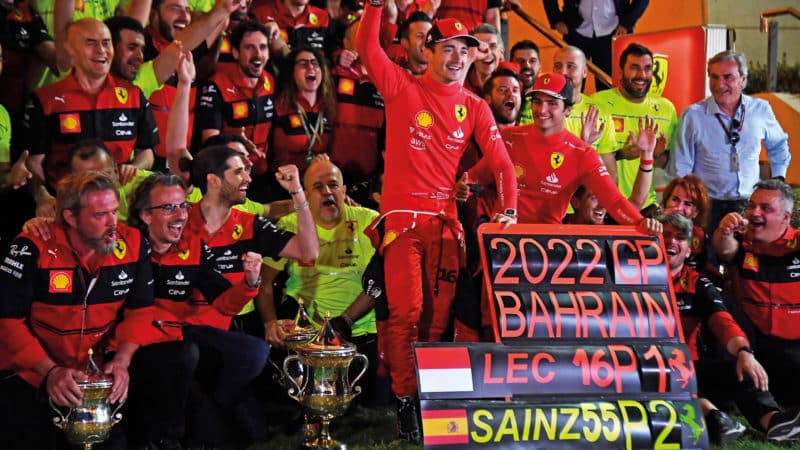
A first 1-2 finish since 2019 set the tone in Bahrain
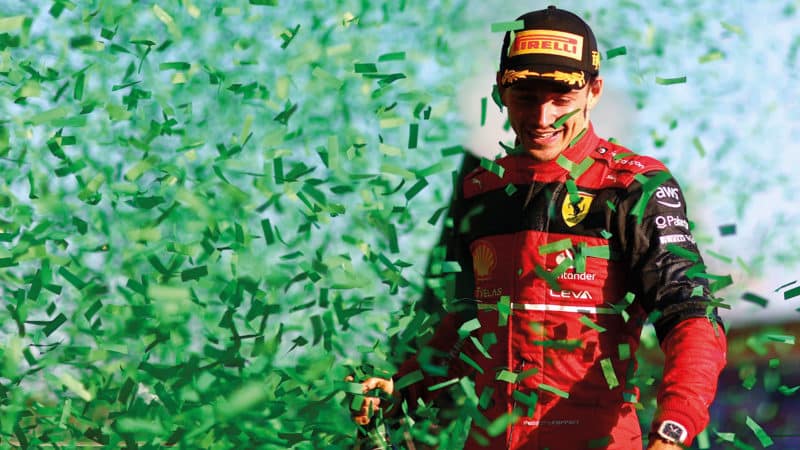
A new talisman: Charles Leclerc is leading the line for Ferrari, and already has a handy world championship lead
The big question now is can Ferrari and Leclerc maintain their flying start and go on to win the 2022 title?
It has been a tough few seasons for the most famous team in F1. Prior to Sakhir, the most recent race victory was achieved by Sebastian Vettel in Singapore in 2019, while the drivers’ title drought stretches back to Kimi Räikkönen’s success in 2007. The past two seasons have featured the team serving as a winless supporting act.
However from the start of this year Ferrari has been the pacesetter. Closest challenger Red Bull won in Saudi Arabia but has struggled with unreliability, while Mercedes has been left behind with a simple lack of performance. Even Binotto hadn’t anticipated such a turn of events.
“Certainly surprised,” he said after Leclerc’s dominant win in round three in Australia. “I think we worked hard, and we put a lot of priority on the 2022 car. I knew that the team was a great team, and we improved ourselves compared to the past seasons. And I was hoping to have a competitive car by the start of this season.
“Then when coming to the winter testing we knew we had a competitive car, but certainly I was not expecting such a good start to the season. I think it would be unfair to think that.”
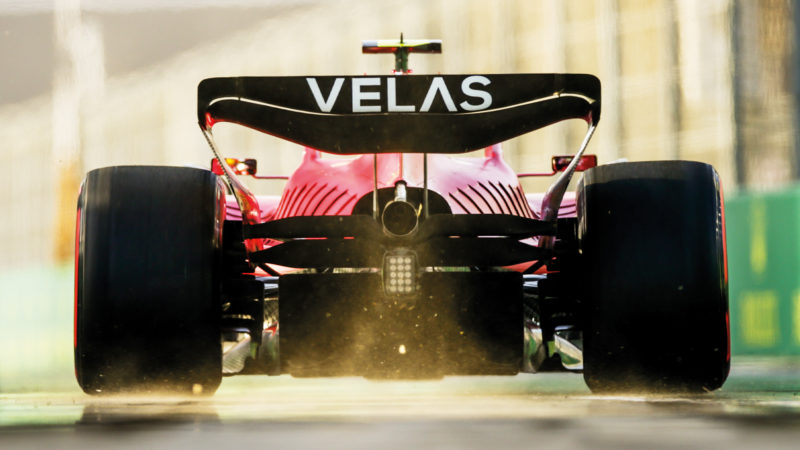
Sainz at Jeddah
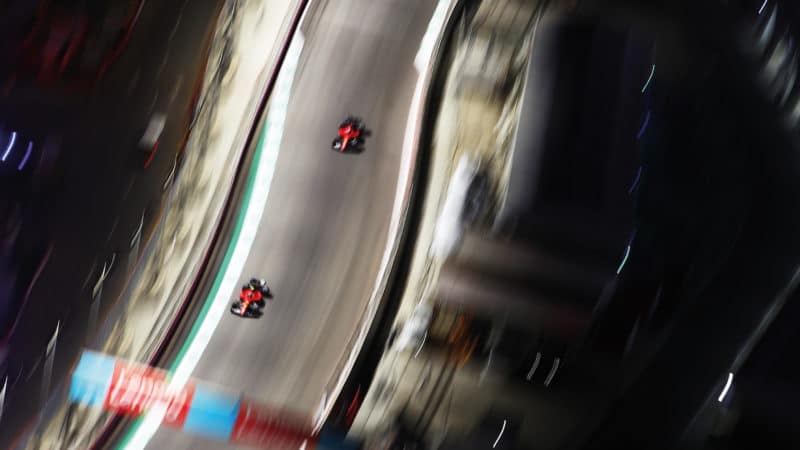
Bahrain GP
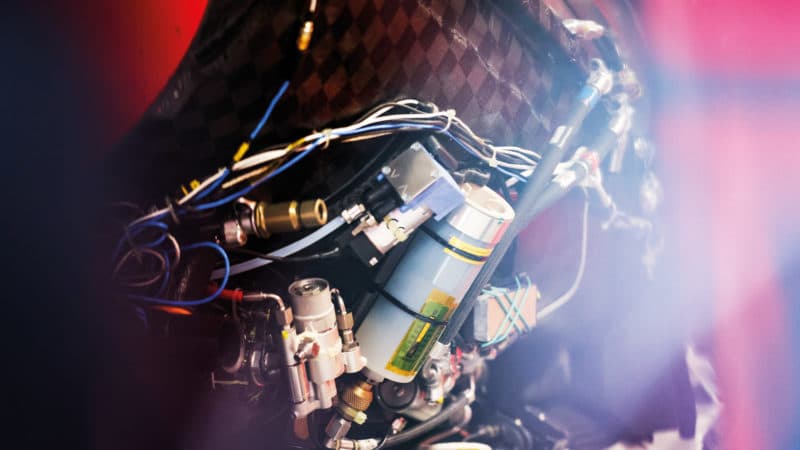
PUs are performing well
How has Ferrari stolen a march on the other teams so far in 2022? To answer that you have to go back a couple of seasons. Under the calm and collected leadership of Binotto the team has gradually been putting the pieces in place. In 2019 it was capable of taking poles and race wins, and then just prior to the 2020 season came the controversy over the investigation into the Ferrari power unit, and the unusual “settlement” that the team agreed with the FIA.
Subsequently Ferrari faced a difficult 2020 season, held back by a reined-in power unit and an aero package that in essence had been designed with more grunt in mind, and which left the car with less than optimal drag levels.
In 2021, with Carlos Sainz providing a breath of fresh air after Vettel’s departure, the team made huge strides. Leclerc stole a couple of pole positions in Monaco and Baku, and Ferrari fought hard all season with old rival McLaren, ultimately securing third place by a comfortable margin. While it wasn’t a battle for the championship the contest provided valuable training for all concerned in anticipation of more significant challenges to come. The fact that Ferrari wasn’t in contention for a title in 2021 also gave the team an automatic advantage over Mercedes and Red Bull. Both had to continue to put R&D resources into their current cars, despite the obvious necessity to focus more on their brand new models for 2022. Ferrari was able to make that crucial switch much earlier.
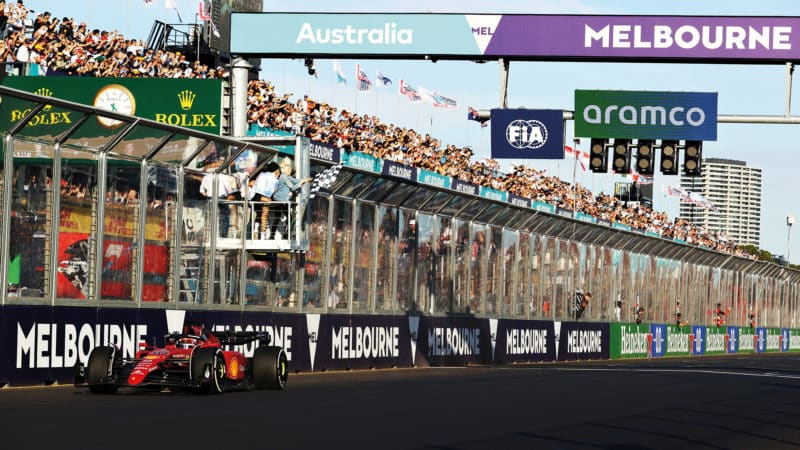
Leclerc was in a different class in Australia, something that surprised Ferrari’s top brass
But perhaps the bigger influence on Ferrari’s resurgence – and one that Domenicali and Brawn will both be celebrating – is the raft of new rules that have come into play this year. These rules – which, as we have seen, appear to be working – were designed to level the playing field specifically with a tightening of aero testing restrictions and a lowering of the budget cap level.
Ferrari reaped a clear long-term benefit from its disastrous sixth place in the 2020 constructors’ championship. Under the ATR regs that poor result put it fifth on the reverse sliding scale of wind tunnel and CFD usage for the crucial period from January to June in 2021, when the first R&D work was conducted for the new cars. The delta to the limits available to Red Bull and Mercedes, ninth and 10th in the list as the most successful teams of the previous year, was significant.
There was a re-set for the July-December period, based on the constructors’ positions after the Styrian GP at the end of June – at that stage Ferrari was fourth, and this still had a useful advantage over RBR and Mercedes. Another re-set followed for January-June 2022, based on last year’s final positions, and thus Ferrari is still conducting more aero work than its two main rivals. However, the next adjustment at the end of July may mean the situation is reversed for the latter half of this year.
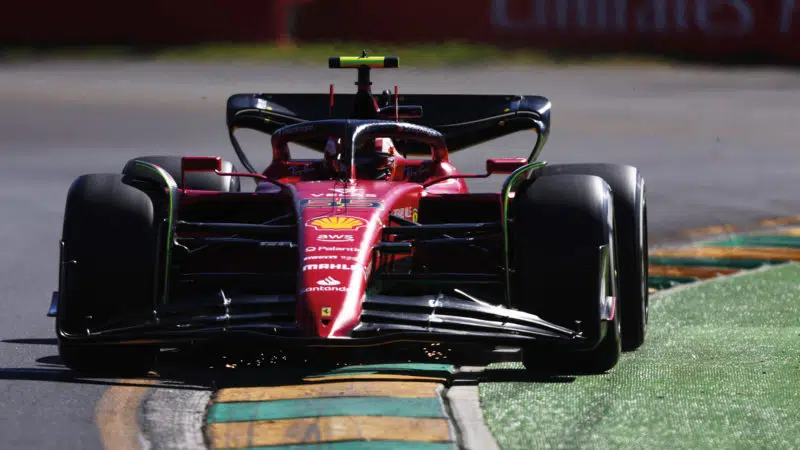
The F1-75 is proving to be not only good-looking, but also very effective.
It’s not just the headline number of wind tunnel hours that counts, but how effectively you use them. And efficiency is also highlighted by the budget cap that came into force last year.
Of the three big players and spenders Ferrari was the keenest to see the cap come into force, suggesting that the team was confident that it could do a better job with reduced funds than its main rivals. One could speculate that lower average salaries at the Italian team, which doesn’t face the competition for talent that we see in the UK’s motor sport valley, has allowed it to maintain a higher head count. Ferrari has clearly done a great job with its 2022 aero package, and the power unit is playing a significant role as well. The engine department had to re-set following the post-2019 FIA clampdown, and it made good progress during 2021, most visibly with a revised hybrid package that came on stream in the summer, and which provided a useful head start for this year’s PU.
Under the rules the V6, the turbo, the MGU-H and even the fuel spec were frozen from March 2022 until the end of the 2025 season, while the deadline for the definitive control electronics, energy store and the MGU-K for that period is September. Any advantage Ferrari currently has over rivals, however small, will henceforth be locked in until the end of the current formula.
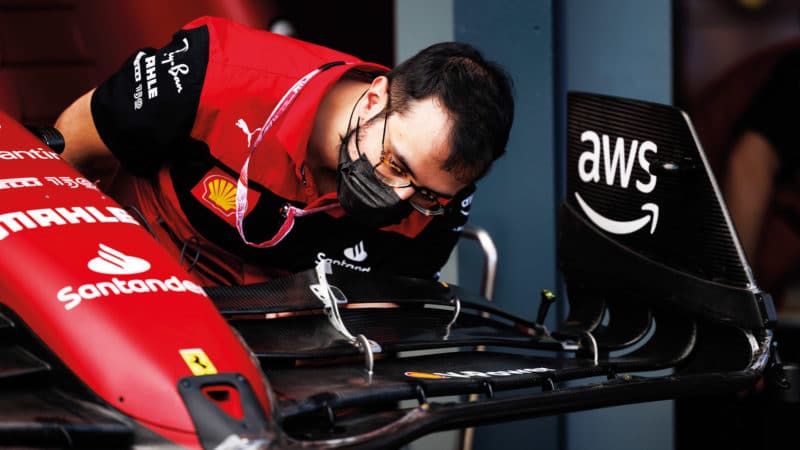
The team won’t rush new parts to the track, and instead is playing a cautious game.
Ferrari has been an extremely stable environment under Binotto, and the days of searching for and sacking scapegoats appear to be over. Red Bull in contrast has lost its top aero guys to Aston Martin, while Mercedes has undergone a reorganisation, most notably with former technical chief James Allison moving sideways. Many of the key HPP engine division guys have been headhunted by Red Bull Powertrains.
It’s worth pointing out too that there’s much less pressure on the race team from low-key current president John Elkann compared to the days of Luca di Montezemolo and the late Sergio Marchionne, whose mere presence at a track often seemed to trigger a meltdown. “I think we all had the feeling that we were working extremely well in the past few years,” says Leclerc. “But until you actually get the results you never know whether you are working better than the others or not.
“I think the results show that we were doing things right, and that we have been working in the right direction and in the best way possible. And this gives us the confidence that we just need to keep pushing in the same direction as hard as we’ve done in the last few years, and try to keep this competitive car.”
Ferrari timeline of recovery |
|
2000 |
Michael Schumacher begins half a decade of Ferrari domination by securing his first title for the team |
2004 |
Schumacher sets a win record, with 13 from 18 races. It’s been equalled since, but not surpassed |
2005 |
The tide begins to turn as Renault and McLaren reduce Ferrari to just a single win all season |
2007 |
Kimi Räikkönen scores Ferrari the drivers’ title, but few thought it would be the team’s last |
2009 |
The double-deck rear diffuser loophole undoes Ferrari, as does injury to Felipe Massa mid-year |
2014 |
V6 engines catches Ferrari cold. It would finish on the podium just twice all year |
2019 |
Back on form, but questions of oil burning lead to an FIA investigation, and a sudden power drop |
2020 |
With less power and a flawed car design, the pandemic locks Ferrari into two winless years |
2022 |
Charles Leclerc leads a Ferrari 1-2 in Bahrain, as the team makes a flying start after the rules reset |
Leclerc has been a big part of the story, and there’s a reason why he’s been signed up for the long term. His sheer pace was evident in 2019 when he took poles and scored his first two wins at Spa and Monza, but he was the first to admit that he still had a lot to learn, especially in areas such as tyre management.
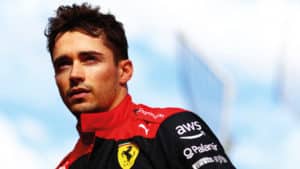
“It felt good, as it did after Spa and Monza the first times,” he said after his Bahrain win. “It felt like a much cleaner weekend overall. I mean, Spa and Monza, it felt great, but I still had some parts of the race where I wasn’t managing the situation very well. And I felt a bit overwhelmed by things sometimes. Now I had everything a bit more under control.”
He’s adamant that his 2022 form does not mean that he’s made an overnight step – he’s simply made steady progress over the past couple of years since those early wins.
“One thing that I don’t like, and I’ve seen it everywhere, is ‘Charles 2.0’,” he says. “This is not the case. I’ve had a growth from year to year that is linear. Last year, I never like to put luck into place, but honestly, there were two races in particular where I lost many points, many valuable points that weren’t too much in my control. And this cost massively at the end of the year.
“And also fighting in between seventh and fourth position, whenever you are doing a very good performance, nobody’s noticing it. Which makes it quite tricky. Of course I probably am even better now that I’m fighting for wins, because this is what I like to do. And it’s great to be back here. But overall, I think it’s just a linear growth from year to year, and there’s not a huge step from last year.”
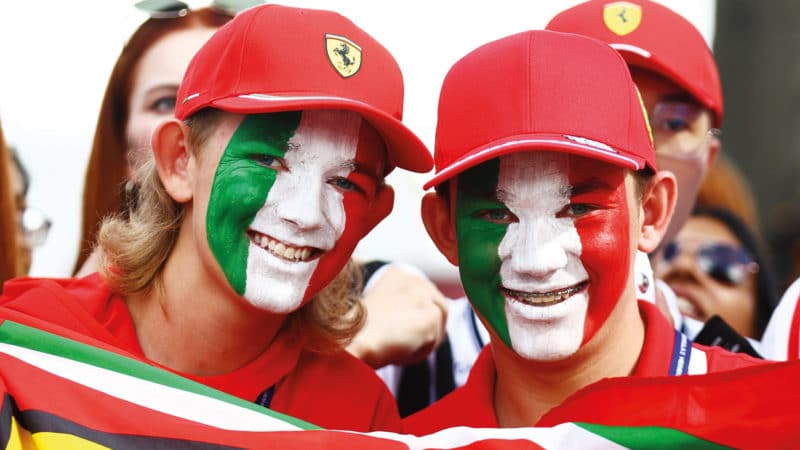
The Drive to Survive generation was out at Melbourne
It took Sainz a while to get onto terms with Leclerc in 2021, but in the latter half of the season he was often a match for him. The Spaniard appeared to have slipped back at the start of this season, having found it harder than his team-mate to adapt to the new car. The challenge he now faces is that Leclerc has already built up some title momentum, and it seems inevitable that the team will get behind him, even if only subconsciously.
There’s a long way to go of course, and much depends on the development race. Ferrari had a strong package at the opening test in Barcelona, and intriguingly the team opted not to throw new parts at the car at the first opportunity. The strategy is to get as much as possible out of the initial package while learning about the new regulations, before deploying the now-limited resources on new parts that will make the difference. That comes back again to the R&D efficiencies driven by the budget cap and the aero testing restrictions.
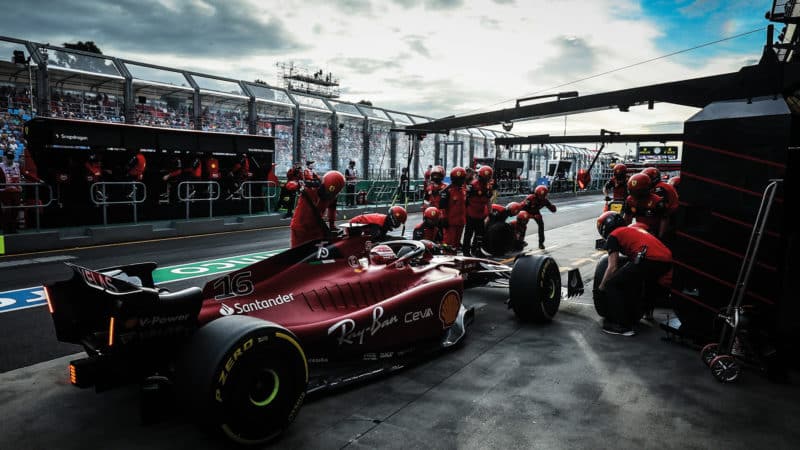
Leclerc in practice at Melbourne
Ferrari hasn’t always been good at developing its cars, but Binotto believes it can now do a better job: “I think that keeping up the level of development through a season is always a challenge, not only for us, but for all the teams. It’s true that our competitors are very strong in that, while at Ferrari the last two opportunities we had, in 2017 and ’18, we lost a bit of ground on development.
“I think since then we have improved our tools, which are wind tunnel, methodologies, process and simulator. And I think that today we are much better prepared compared to the past to do the proper job as well in development. We need to add that compared to that time, today we’ve got a budget cap, which will influence the rate of development.
“And I think that is a key point, a key element. My concerns are that we need to make sure that we’ve got the right policing on that, because it can be a game changer in the fight for developments.”
Leclerc meanwhile is keeping his feet firmly on the ground: “It’s still very early on in the season. But let’s say it’s a very good start of the season. As I said many times, I think development will be key. And we as drivers needs to help the team in the best way possible to keep this competitiveness.”
